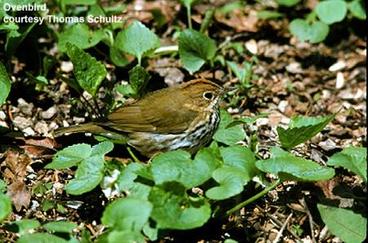
Birds that winter in South and Central America fly thousands of miles to nest and raise young in the hardwood forests of the Great Lakes region. Birds that breed and nest in the hardwood forests rely on the forest floor for both food (mostly insects and seeds) and nest sites. For example, ovenbirds build their nests in the thick forest floor of earthworm-free hardwood forests. Their nest of leaves, moss and twigs has a roof so the entrance to the nest is just a small slit. Ovenbirds eat a diverse diet of insects, spiders, snails and seeds that they find in the forest floor. Research on forest bird diversity in the western Great Lakes region has shown that ovenbird nesting success declined in relation to declining forest floor thickness. It is not known if the declines in forest floor thickness reported in the study were the result of earthworm invasions, but one could assume there might be a relationship and further research could illuminate this relationship.
Other forest birds use the layers of vegetation that seedling, sapling and shrubs provide for nesting and food. When these forest layers decline in response to earthworm invasion, important nest sites and sources of berries and seeds for food decline as well. As a result, we might expect to see and hear fewer birds in our forests after earthworms invade.
Mammals of all sizes inhabit and use hardwood forests. Raccoons, white-tailed deer, black bear and numerous small mammals are just some of the in habitants that use the forest understory for both cover and a source of food. Bear for example, find hazelnuts and raspberries a great source of food as they put fat on for winter. Shrews, voles, moles and mice eat insects, tubers, seeds, fruit and fungi. They also use the forest floor for cover and nest in and under forest debris.
Different mammal species will be affected according to their dependence on various aspects of the ecosystem. Like amphibians and reptiles, small mammals like voles rely on the forest floor for protection and food. With fewer insects and fungi, their preferred foods, these small mammals may be expected to decline after earthworms remove the forest floor. If the voles disappear, weasels may be affected because voles are a food source for them. Medium-sized mammals like raccoons, hare, and porcupine may also find less food after earthworms invade and may have to explore other habitats to supply their needs. Large mammals like white-tailed deer and black bear are only occasional visitors to hardwood forests. If they find their food source has disappeared, they may simply move on, spending less time in the forest and more time elsewhere.
A recent study in a north-central Minnesota hardwood forest stand showed that small shrew species and red-backed voles dominated in the area of the stand that had not yet been invaded by earthworms (and still had a thick forest floor) while large voles and deer mice dominated in areas of the same forest stand that had been invaded by earthworms, where the forest floor had been removed. Red-backed voles have been shown to be important dispersers of mycorrhizal fungi which are important for forest plants… read more. If earthworm invasions do result in changes in small mammal communities, we still do no know what the consequences of those changes might be for other forest inhabitants and the forest ecosystem.
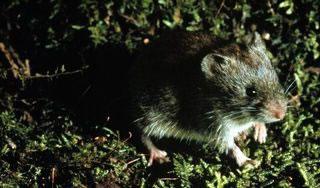 |
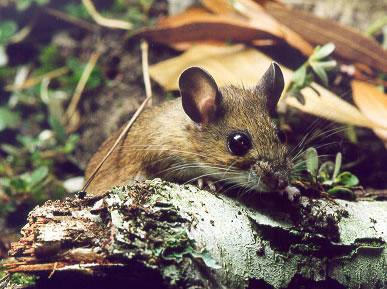 |
White-tailed deer may be more abundant across the Great Lakes region than any other time in recorded history due to the increase in their preferred habitat, young forests and edges. Deer browse many forest plants including tree buds, leaves and herbaceous plants and their herbivory has been implicated in declines of many forest plant species. Emerging research suggests that the effects of deer browsing interact with the effects of exotic earthworm invasion to even further impact the native plant species in a forest.
How does that work? Well, our theory goes like this… prior to earthworm invasion herbivory, whether by an insect or mammal, in a hardwood forest ecosystem usually has little impact on plant species in the understory because total number of plant species is high as is the number of plants within each species. Therefore, the overall percent of total plants browsing is low as is the impact due to browsing. When earthworms invade, they cause a wave of plant mortality… read more. So now, the total number of species and individual plants is lower and the same amount of browsing now consumes a much larger percent of the total plant community. So, now the deer browsing has a greater impact than it did before... read more. This is the nature of an interaction effect, when the impact of one factor increases due to a second factor.
Amphibians and reptiles, such as salamanders, frogs & toads and snakes, live in the hardwood forest but are usually hard to see since they tend to make their homes inside or under old, rotting logs or in piles of rotting plant material. Amphibians and reptiles that live in hardwood forests are especially adapted to the moist and cool conditions of the forest floor. When the forest floor is removed, they no longer have this protection from predators and from drying out. With a decrease in the number of insects, a critical food source is diminished which can lead to additional stresses.
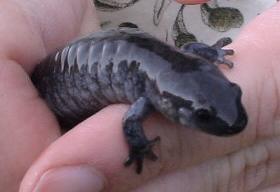 |
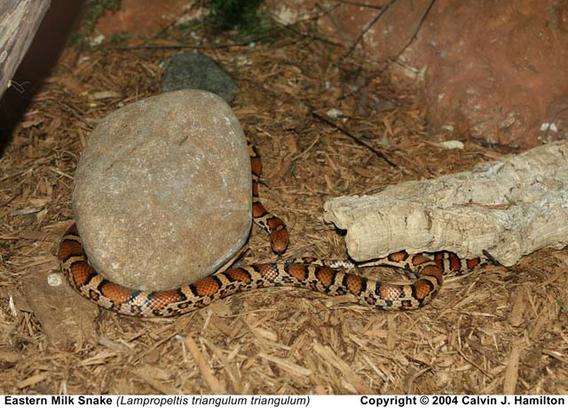 |
The blue spotted salamander is common in many hardwood forest of the Great Lakes region. They are well adapted to the moist cool conditions of the forest floor. Salamanders do not have lungs and therefore must breathe through their skin, which must be moist for this to happen. They feed on insects and other small organisms that live in the forest floor and breed in small ponds and wetlands in and around the forest stand in which they live. Research is beginning to show that salamanders may be both negatively and positively affected by earthworm invasion. For example, the females may benefit by having a nutritious new food sources which allows them to produce more young. However, the young cannot eat earthworms and their major food source, small invertebrates, can decline dramatically when earthworms invade.
There are also several snake species living in the moist, cool and well-protected forest floor of Great Lakes hardwood forests. One example, is the beautifully colored eastern milk snake (Lampropeltis triangulum triangulum)
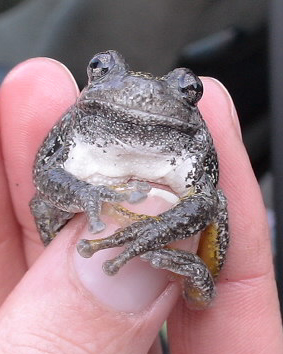
Many frog and toad species also live in hardwood forests, and breed in small vernal pools and wetlands across the region. No research has been conducted to determine if earthworm invasion affects these creatures, so we don’t know if exotic earthworm invasion may be contributing to some of the documented declines of frogs and toads across the region. If exotic earthworms affect the chemistry or persistence of the vernal pools and small ponds that frogs and toads breed in, they could be having negative affects on their reproduction. Again, research is needed.